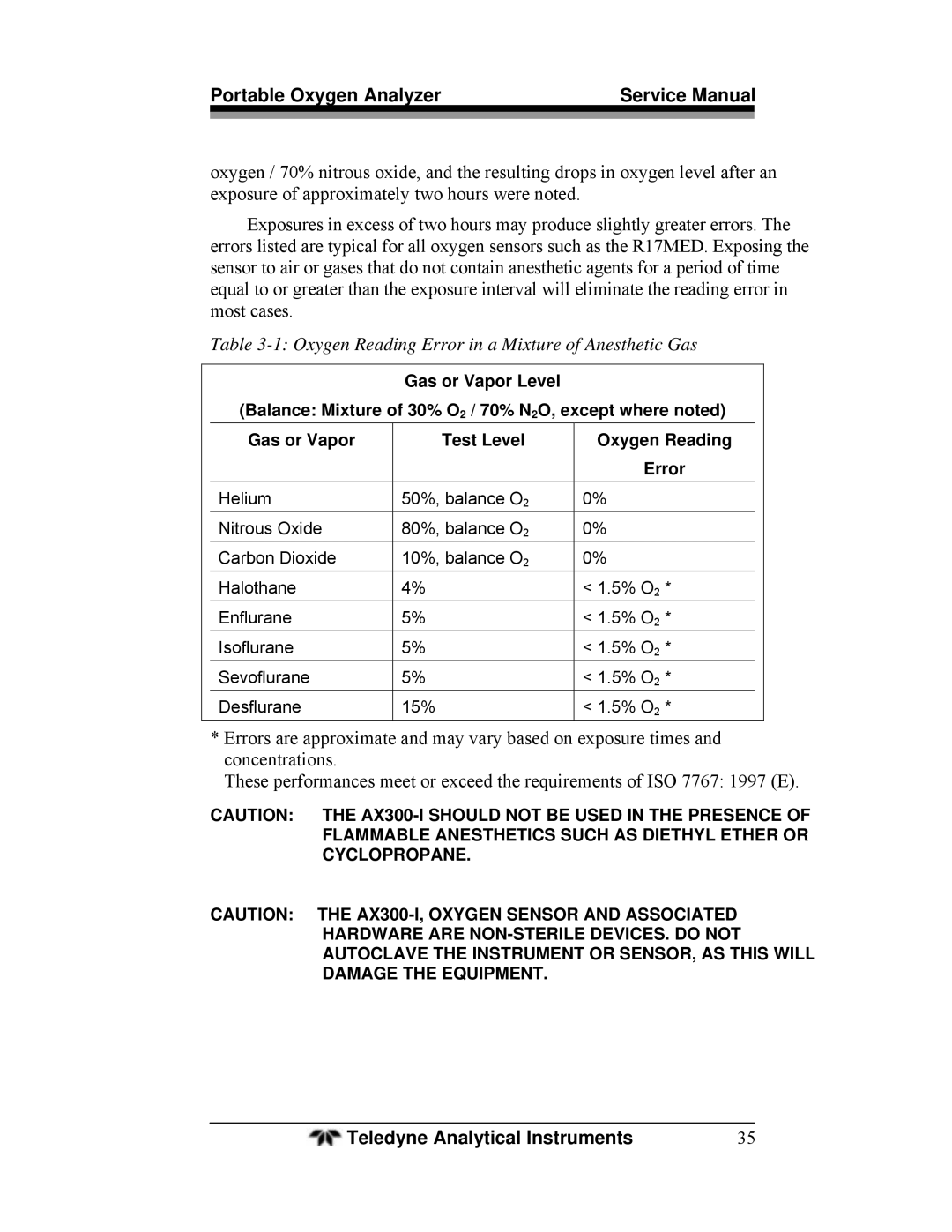
Portable Oxygen Analyzer | Service Manual | |
|
|
|
oxygen / 70% nitrous oxide, and the resulting drops in oxygen level after an exposure of approximately two hours were noted.
Exposures in excess of two hours may produce slightly greater errors. The errors listed are typical for all oxygen sensors such as the R17MED. Exposing the sensor to air or gases that do not contain anesthetic agents for a period of time equal to or greater than the exposure interval will eliminate the reading error in most cases.
Table 3-1: Oxygen Reading Error in a Mixture of Anesthetic Gas
Gas or Vapor Level
(Balance: Mixture of 30% O2 / 70% N2O, except where noted)
Gas or Vapor | Test Level |
|
|
Helium | 50%, balance O2 |
Nitrous Oxide | 80%, balance O2 |
Carbon Dioxide | 10%, balance O2 |
Halothane | 4% |
Enflurane | 5% |
Isoflurane | 5% |
Sevoflurane | 5% |
Desflurane | 15% |
|
|
Oxygen Reading
Error
0%
0%
0%
<1.5% O2 *
<1.5% O2 *
<1.5% O2 *
<1.5% O2 *
<1.5% O2 *
*Errors are approximate and may vary based on exposure times and concentrations.
These performances meet or exceed the requirements of ISO 7767: 1997 (E).
CAUTION: THE
CAUTION: THE
Teledyne Analytical Instruments | 35 |
